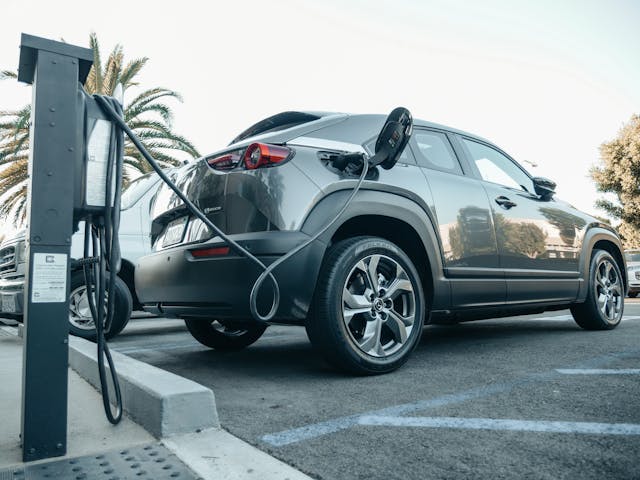6 Simple Yet Effective Tips About EV Battery Maintenance
Regular battery maintenance should always be a top priority among electric vehicle (EV) users as their battery’s health determines how much range they can get from their vehicle and allow them to maximise its performance. A well-maintained battery also helps alleviate range anxiety—a common worry among EV users as to their car potentially running out of energy even before reaching their destination—and thus give EV users peace of mind each time they take their car out for a drive.
With that being said, not everyone may be aware of how exactly they can keep their EV battery at optimum condition. This is especially true for new EV users who are still familiarising themselves with EV batteries after making the switch from petrol-powered vehicles. Whether you’re among those new users or simply in need of guidance on how to properly maintain your EV’s battery, here are some tips to keep in mind.
- Limit Use of Fast Charging
There are three levels of charging an EV, with Level 1 taking around 12 hours, Level 2 in around 6 hours, and Level 3 in just around an hour. The latter, commonly referred to as fast charging, can certainly be convenient for moments when you need to hit the road quickly. However, frequent use of fast charging can cause more stress on your battery compared to the slower charging options. This is because the heat generated by fast charging accelerates battery degradation over time.
This isn’t to say that you shouldn’t use fast charging anymore, however. Rather, vary your charging levels by also charging your EV at a slower pace from time to time. This can be done more conveniently by having an EV charger at home, where you can simply let your EV charge overnight. For instance, getting a Hypervolt EV charger installation lets you conveniently set a charging schedule through its smart charging feature, allowing you to take advantage of cheaper energy rates at night to save money.
- Keep Charge at Optimal Level
While charging your battery up to 100% then fully depleting its charge seemingly gets you the most out of your battery, letting it drain frequently can actually reduce your battery’s capacity over time. This is because deep discharges or running your battery down to very low levels put more stress on its battery cells, leading to accelerated degradation.
EV batteries last longer if you keep them at an optimal level, particularly between 20% and 80% charge levels. Make sure to monitor your charging levels whenever you need to top up your EV. You can also set a charging limit on your EV charger’s app to ensure that your car’s battery is kept at the optimal level.
- Avoid Exposing Your EV to Extreme Temperatures
Constant exposure to extreme temperatures can lead to your battery degrading at a faster rate and also reduce its efficiency in the long run. Hence, be sure to take the necessary precautions when you know the weather will be too hot or too cold during your drive. Avoid parking your EV to where it can be exposed to direct sunlight during hot days. Meanwhile, you can precondition your vehicle before driving to have your car warm your battery during colder seasons.
- Maintain Consistent Driving
Rapid acceleration and hard braking will not only drain your battery’s charge much faster, but they also generate excessive heat that puts additional stress on your battery. To extend battery life and maintain optimal performance, adjust your driving habits to be more consistent and mindful. This means maintaining a steady speed while driving and avoiding sudden accelerations or stops to reduce strain on your battery as much as possible.
Another tip that can make this easier for you is to plan your routes beforehand. For instance, you can look for alternative routes where there’s less road congestion, allowing you to drive more smoothly rather than having to frequently stop then move again due to heavy traffic.
- Use Regenerative Braking Wisely
Regenerative braking can be useful in extending your EV’s range as it converts kinetic energy into electricity. However, overuse of regenerative braking can also generate excess heat, which is detrimental to your battery’s health. Hence, learn to strike the balance between using regenerative braking efficiently to regain energy and keeping it to a minimum to avoid unnecessary strain on your battery.
- Download the Latest EV Software Updates
EV software updates can introduce various battery and charging improvements such as refinements in charging algorithm, adjustments in your current battery management system, or better thermal regulation. These changes can significantly improve battery health and thus boost your EV’s performance as well. Make sure you don’t miss these updates by regularly checking for new software updates and installing them as soon as they’re available. In addition, monitor your battery’s state of health by using your EV’s diagnostic tools to catch potential issues early on and have them fixed before they get worse.
Maintaining your EV battery doesn’t have to be a complicated process. Rather, by simply integrating the tips listed in this article into your daily driving and charging routine, you can ensure that your battery stays at optimum health. This way, you get more range out of your EV while also enjoying a hassle-free driving experience.

